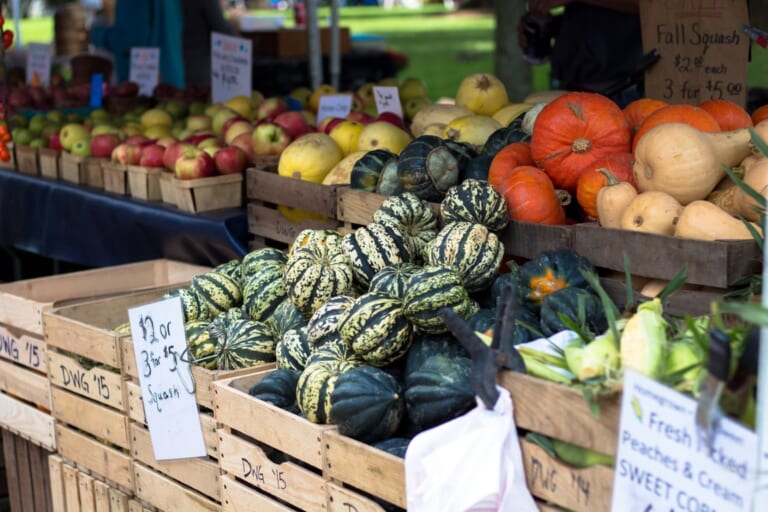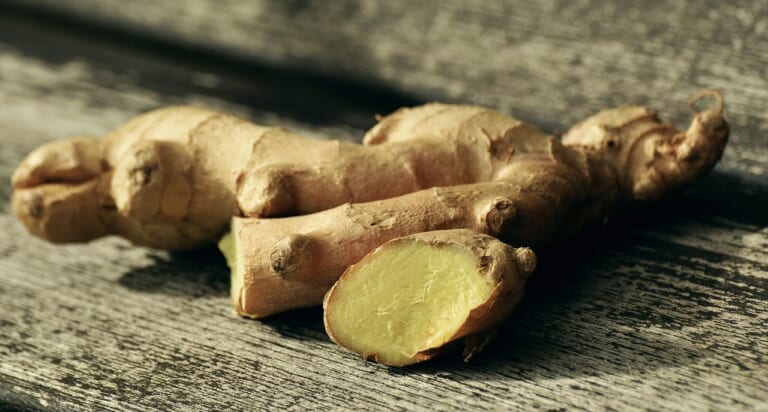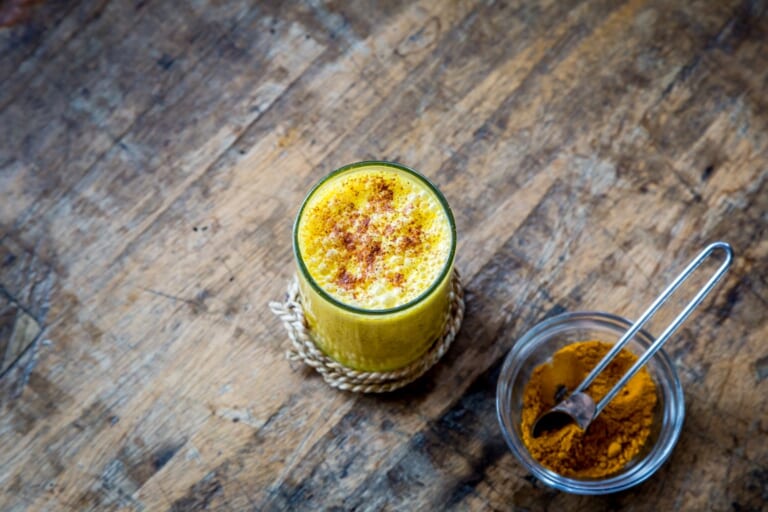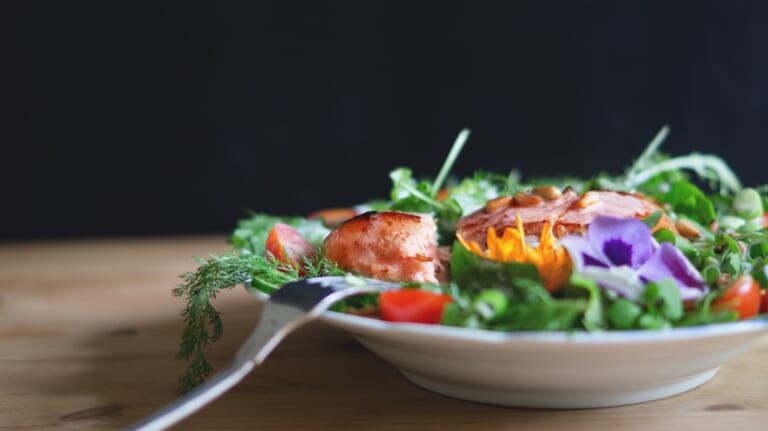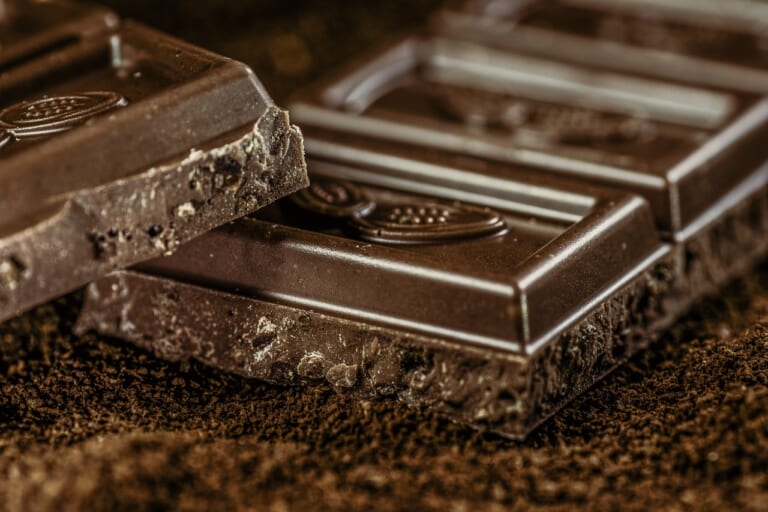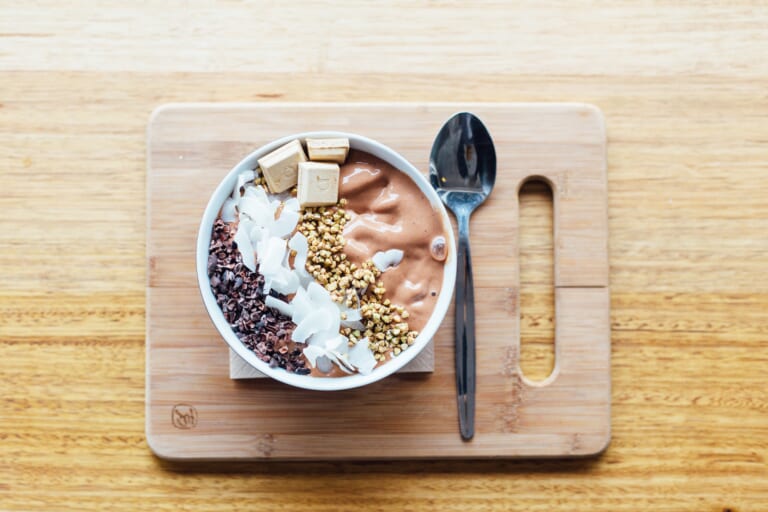SHOULD YOU BE WORRIED ABOUT COVID-19 LIVING ON YOUR KITCHEN COUNTERTOPS
Hi, I’m Vektween, your blog host, welcome back to www.SimpleEats.com. Chef T and I figured that since you’re probably cooking more often at home, one of your concerns may be, especially during this time, how long does COVID-19 live on your kitchen countertop or on any surface for that matter?
It’s important to take the necessary precautions to prevent the spread of COVID-19 and there are several we’re all aware of such as washing your hands, disinfecting pretty much everything, and social distancing just to name a few. SARS-CoV-2 spreads from person to person then it causes COVID-19. The spread most often happens within a 6 feet radius, from an infected person who coughs or sneezes, producing small droplets that can land on an individual and/or on a surface, as well as linger in the air for a few hours. These droplets can get into your eyes, mouth, and even inhaled in your noise.
If a surface becomes contaminated with SARS-CoV-2, and an individual then touches the contaminated surface and then begins touching their
FOLLOW US ON SEWCT INSTAGRAM & FACEBOOK
How to Clean and Disinfect.
There are different techniques to take when cleaning and disinfecting your kitchen countertops, and it’s also important to know what the guidelines are for the other surfaces located throughout your house, and not just in the kitchen.
Below are four surfaces to help further your safety steps both in the kitchen and the rest of your home:
Soft/Porous Surfaces – Examples of these surfaces are carpeted floor, throw rugs, drapes, etc. For some of these items you may be able to launder them, but always check the tags or manual for accurate washing instructions. If not, remember to check the appropriate EPA approved cleaning supplies for these types of surfaces but clean any evidently contaminated areas prior to doing so.
Hards Surface – wash down the surface with soap or detergent, and water before applying a disinfected on top. The most common disinfectants, that are EPA registered, should work. However, if you want to be safe, be sure to check the CDC’s list of products which can be used against viruses that cause COVID-19.
Appliances – electronics, such as remotes, touch screens, or kitchen gadgets, are just a few of the ‘high touch’ items to remember to clean first and then disinfect, with the proper solutions. Refer back to the manual’s guidelines for cleaning and disinfecting these devices.
Clothing/Linens – do not shake items, as this could disperse the virus in the air, and make sure to clean/disinfect the areas/bins you decide to rest the clothes or linens in. Always follow
Now you have a basic idea of the four common types of surfaces in your house that you need to think about. It’s important that the surfaces remain clean and that you stay vigilant about your cleaning regimen, especially after going outside. It might be a good idea to create a system, whether or not you live alone or with a larger family, about what you do when you come back inside, where do you put your things, and how do you clean these areas, and your clothes, after you have returned home.
GET SEWCT INTO OUR PODCAST AND STAY INFORMED
How long can the Coronavirus sit on any surface:
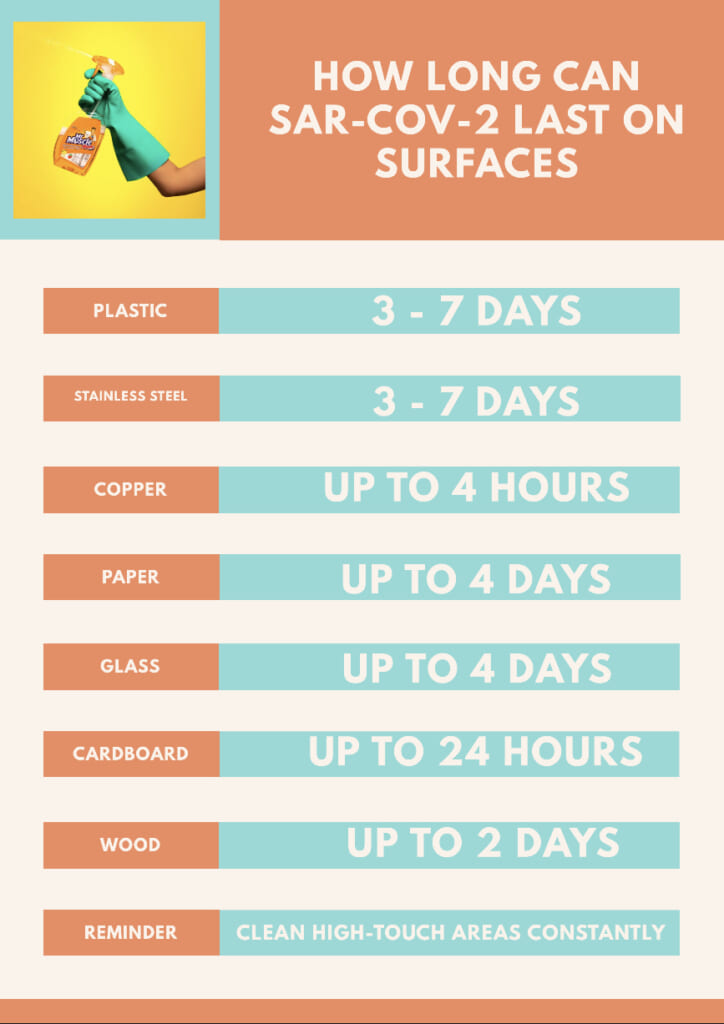
As each surface is different, the coronavirus’ life span on each surface is not the same either, with plastic and stainless steel having the longest longevity of the bunch. Here are seven surfaces to keep in mind when you’re arriving home from the grocery store.
- Plastic – many objects are made from plastic, such as light switches, toys, credit cards, etc and many food products are stored in plastic. The coronavirus can live on plastic for 3 – 7 days!
- Stainless Steel – any stainless steel items – such as pots, pans, blenders, door handles, keys, etc, which the coronavirus can live on these surface up to 7 days!
- Copper – has been shown on this metal up to 4 hours.
- Paper – think magazines, letters, tissue, paper towels, your mail, and even money. In general, the virus could last up to 3 hours. yet on paper money this could be up to 4 days.
- Glass- your mirrors, glasses, dishes, screens etc., the virus can last on this surface up to 4 days.
- Cardboard – The virus was not detected after 24 hours.
- Wood – any furniture, shelving, tabletops, cabinets, or even countertops and cutting boards have shown that the virus can last on this surface up to 2 days.
Should Food and Water be a concern with the coronavirus?
As far as the EPA’s concern there has been no detection of COVID-19 in
A heart-healthy diet packed with vegetables, olive oil, and quality protein is important during the Coronavirus outbreak.
It’s important to stay healthy and practice healthy living habits especially during the season of COVID-19. A healthy lifestyle should always be incorporated into your daily routine to make sure your body’s immune system stays strong so that you are able to fight off any foreign invaders. As everyone’s dietary structure is different, it’s important to be sensitive and aware of the natural signals your body alerts you to when food doesn’t agree with your system. If the Mediterranean diet is something you look to explore and don’t know where to start, we have you covered. Here’s a simple and healthy Mediterranean Diet for you to grab some inspiration from.
If you’re listening to this Simple Eats post on Alexa, be sure to head over to vektween.com and download your Mediterranean Diet ebook. Get access to these heart-healthy recipes, that are full of high-fiber, nutrient-dense foods including fruits, vegetables, legumes, and whole grains. Always remember, there are many other dietary ebooks we provide in case this plan doesn’t fit your dietary needs. Whatever diet you choose, just remember to always eat with a purpose Simple Eaters! Eat consciously and enjoy your food! Well, that’s it for today… thanks for joining me right here on vektween.com, the platform that helps you become a better you. I’m Vektween, your virtual host, and I will speak to you all soon. Stay Safe out there and remember…wash your hands.


